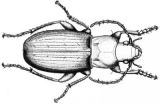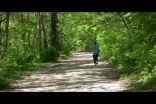(Press-News.org) One third of men in academic science are willing to scale back their careers to focus on family life, according to researchers.
While traditional fatherhood roles may be shifting, men in the male-dominated field of academic science, such as physics and biology, face significant challenges in trying to balance work and family life, said Sarah Damaske, assistant professor of labor and employment relations and sociology, Penn State. The majority of men studied spoke of the pull of fatherhood and a desire to spend more time with children, yet they also acknowledged that academic science often demands an intense devotion to work coupled with very long work hours. A small portion of the sample explained that they expected to not have children, because they saw fatherhood as incompatible with the demands of academic science.
"These findings suggest to us that the academy does not merely have a gender problem, but also a child-rearing problem -- men who want to have and spend time with their children likely will face challenges in academic science," said Damaske, who worked with Elaine Howard Ecklund, Autrey Professor of Sociology, Rice University; Anne Lincoln, associate professor of sociology, Southern Methodist University and Virginia White, graduate student, University of Chicago.
The researchers said that one-third of men in academic science largely expect to be involved equally at home and are willing to reduce their work devotion to do so. The study also showed that 64 percent of men interviewed spoke of their desire to be more involved at home and indicated that they make efforts to spend increased time at home. However, 15 percent of respondents chose to forgo childrearing, either by marrying and making a commitment not to have children or by remaining single with no intention of having children.
Ecklund said the work-life balance of male scientists is not as well studied as other aspects of family life.
"Despite the growing amount of research devoted to women in science, there has been relatively little research on the work-life balance of men in academic science," Ecklund said. "The majority of existing research on academic men has focused on differences between men and women, leaving us with little information about variation among male scientists. Yet, academic science remains dominated by men, so we need to know if they deal with the same issues balancing work and family life as do women."
The study, which appears currently in the online version of Work and Occupations and is scheduled for the November print issue, included in-depth interviews with 74 men across different ranks in biology and physics at prestigious U.S. universities. The interviews were conducted between June 2009 and April 2011 and took between 20 minutes and two hours. Each respondent was interviewed once, either in person or by phone. The average age of men in the sample was 41; the median age was 39.
The researchers asked participants about whether they had children, were raising children and maintaining a career as a scientist, career challenges and future steps, how their careers impacted the number of children they chose to have, balancing their career and their spouse's career/household duties and other topics.
INFORMATION:
The National Science Foundation, Rice University and Penn State's Population Research Institute supported this work.
Some male scientists willing to forsake careers for family
2014-09-11
ELSE PRESS RELEASES FROM THIS DATE:
Not enough vitamin B1 can cause brain damage
2014-09-11
MAYWOOD, Ill – (Sept. 11, 2014) A deficiency of a single vitamin, B1 (thiamine), can cause a potentially fatal brain disorder called Wernicke encephalopathy.
Symptoms can include confusion, hallucinations, coma, loss of muscle coordination and vision problems such as double vision and involuntary eye movements. Untreated, the condition can lead to irreversible brain damage and death, according to neurologists at Loyola University Medical Center.
In the developed world, Wernicke encephalopathy typically occurs in people who have disorders such as alcoholism and anorexia ...
Investigators from Montefiore and Einstein to present data at 2014 ASTRO Meeting
2014-09-11
NEW YORK (September 10, 2014) – Members of the Department of Radiation Oncology at Montefiore Einstein Center for Cancer Care (MECCC) and Albert Einstein College of Medicine of Yeshiva University's NCI–designated Albert Einstein Cancer Center will present new study findings at the 56th Annual Meeting of the American Society for Radiation Oncology (ASTRO) revealing the impact socioeconomic status has on radiation treatment compliance, predictive indicators for clinical outcomes and on radiation therapy duration and dosing recommendations. ASTRO is being held September 14 ...
Two new species of carabid beetles found in Ethiopia
2014-09-11
There are more than 150 species of beetles in the genus Calathus, 17 of which have only been found in the mountains of the Ethiopian Highlands. Now scientists have found two new ones — Calathus juan and Calathus carballalae — and have described them in Annals of the Entomological Society of America.
C. juan is named for Juan Novoa, the son of one of the authors, in recognition of his help on various beetle-collecting expeditions. Adults are black and shiny, and are 9.5-11.5 millimeters long. It was found under stones at the base of giant, tree-like plants called lobelias ...
How salt causes buildings to crumble
2014-09-11
This news release is available in German. Historic stone buildings are tourist magnets. The Jordanian rock city of Petra, the medieval town of Rhodes in the Aegean Sea and the sandstone temples at Luxor, Egypt, for example, attract hundreds of thousands of visitors each year. These cultural assets all have one thing in common: they suffer from weathering caused by salts. These crystallise inside the porous building materials and generate enough force for the stone to break or crumble. The same problem also occurs in concrete buildings in this country.
Researchers at ...
Ticks that vector Lyme disease move west into North Dakota
2014-09-11
According to the U.S. Centers for Disease Control, there are more than 300,000 cases of Lyme disease in the U.S. each year. Last year, most Lyme disease cases reported to the CDC were concentrated heavily in the Northeast and upper Midwest, with 96 percent of cases in 13 states. In fact, the disease gets its name from the northeastern town of Lyme, Connecticut, where it was first discovered.
However, a new article published in the Journal of Medical Entomology reports that the ticks that vector Lyme disease — Ixodes scapularis, also known as blacklegged ticks or deer ...
Increased access to nature trails could decrease youth obesity rates, MU study finds
2014-09-11
VIDEO:
Researchers at the University of Missouri and the University of Minnesota have found that local governments can help reduce youth obesity levels by increasing the amount and type of public...
Click here for more information.
COLUMBIA, Mo. – As youth obesity levels in America remain at record high levels, health professionals and policymakers continue to search for solutions to this national health issue. Now, researchers at the University of Missouri and the University ...
Study finds high protein diets lead to lower blood pressure
2014-09-11
(Boston)--Adults who consume a high-protein diet may be at a lower risk for developing high blood pressure (HBP). The study, published in the American Journal of Hypertension, by researchers from Boston University School of Medicine (BUSM), found participants consuming the highest amount of protein (an average of 100 g protein/day) had a 40 percent lower risk of having high blood pressure compared to the lowest intake level.
One of three U.S. adults has hypertension and 78.6 million are clinically obese, a risk factor for the development of hypertension. Because of the ...
New defense mechanism against viruses discovered
2014-09-11
This news release is available in German. When it comes to defence against viruses, the immune system has an arsenal of weapons at its disposal including killer cells, antibodies and messenger molecules, to name just a few. When a pathogen attacks the body, the immune system usually activates the appropriate mechanisms. However, some of the mechanisms do not have to be triggered; they are continuously active as a standing army. Researchers from ETH Zurich, in collaboration with scientists from the University of Bern, have now discovered a new form of this so-called ...
UM research reveals secrets of animal weapons
2014-09-11
MISSOULA – From antlers to horns, humans have long been fascinated by animals' ability to defend themselves with their natural-born weapons. But until now, no studies have directly tested whether those weapons perform better at the animals' own style of fighting than they would using the fighting style of another species. Researchers at the University of Montana recently discovered each species' weapons are structurally adapted to meet their own functional demands of fighting.
The groundbreaking research, conducted over the past year by UM doctoral student Erin McCullough ...
Excitonic dark states shed light on TMDC atomic layers
2014-09-11
A team of Berkeley Lab researchers believes it has uncovered the secret behind the unusual optoelectronic properties of single atomic layers of transition metal dichalcogenide (TMDC) materials, the two-dimensional semiconductors that hold great promise for nanoelectronic and photonic applications.
Using two-photon excitation spectroscopy, the researchers probed monolayers of tungsten disulfide, one of the most promising of 2D materials, and found evidence for the existence of excitonic dark states – energy states in which single photons can be neither absorbed nor emitted. ...


